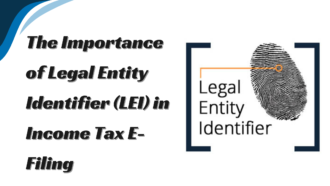Streamlining Wealth: The Power of Automation in Credit Card Reconciliation
- 1 Understanding Credit Card Reconciliation
- 1.1 The Challenges of Manual Reconciliation
- 1.2 The Role of Automation in Reconciliation
- 1.3 Implementing Automation in Credit Card Reconciliation
- 1.4 Advantages of Automated Reconciliation
- 1.5 Considerations When Moving to Automated Reconciliation
- 1.6 Future of Automated Reconciliation
- 2 Conclusion
Improving credit card reconciliation is a critical task for businesses to ensure accurate financial reporting and accounts payable management. Automation in this process can lead to numerous benefits, including increased efficiency, reduced errors, and significant time savings. Here’s how it can transform the task of credit card reconciliation.
Understanding Credit Card Reconciliation
Credit card reconciliation is the process of verifying transactions recorded on credit card statements against the company’s internal records. It is crucial for detecting fraud, preventing accounting errors, and ensuring that all transactions are accounted for correctly.
The Challenges of Manual Reconciliation

Traditionally, reconciliation is done manually, which can be time-consuming and error-prone. Manual reconciliation involves cross-referencing paper statements with ledger entries, which can lead to the following issues.
- Human Error: Manual data entry is susceptible to mistakes.
- Time-Consuming: It can take hours or days to reconcile accounts manually.
- Inefficiency: Manual reconciliation does not scale well with the volume of transactions.
- Lack of Real-Time Data: Delays in manual processing can lead to outdated financial data.
The Role of Automation in Reconciliation
Automation uses software to match transactions on credit card statements with entries in the accounting system.
Here’s how automation improves the reconciliation process:
- Accuracy: Automated systems reduce the risk of human error by using algorithms to match transactions.
- Efficiency: Automation speeds up the reconciliation process, freeing up staff for higher value tasks.
- Scalability: Automated systems can handle a higher volume of transactions without additional resources.
- Real-Time Data: Automation allows for real-time reconciliation, providing up-to-date financial information.
Implementing Automation in Credit Card Reconciliation

Here are the steps to implement automation in credit card reconciliation:
- Assessment: Evaluate the current reconciliation process to identify areas for improvement.
- Software Selection: Choose reconciliation software that integrates with your existing accounting system.
- Integration: Integrate the reconciliation software with your credit card providers and accounting system.
- Customization: Configure the software to match the specific needs of your business.
- Training: Train staff on how to use the new system and monitor transactions.
- Monitoring: Continuously monitor the system to ensure it operates correctly and make adjustments as needed.
Advantages of Automated Reconciliation
- Cost Savings: Automation reduces labor costs associated with manual reconciliation.
- Reduced Fraud Risk: Automated systems can detect irregularities and potential fraudulent activities more effectively.
- Improved Compliance: Automation helps maintain accurate records, which is essential for regulatory compliance.
- Data Analysis: Automated reconciliation tools often come with analytics capabilities, providing insights into spending patterns and financial health.
Considerations When Moving to Automated Reconciliation
- Cost of Implementation: While there will be upfront costs, the long-term savings typically justify the investment.
- Change Management: Staff may resist changes to their workflow, so it’s crucial to manage the transition carefully.
- Data Security: Ensuring that sensitive financial data is secure when using automated systems is paramount.
Future of Automated Reconciliation

With advancements in technology, the future of automated reconciliation looks promising. The integration of artificial intelligence and machine learning can further enhance the accuracy and predictive capabilities of reconciliation software, leading to more proactive financial management.
Conclusion
Automation in credit card reconciliation offers significant benefits to businesses by enhancing accuracy, efficiency, and financial control. While the transition to automated systems requires careful planning and investment, the advantages far outweigh the initial challenges. By embracing automation, companies can not only improve their reconciliation process but also gain valuable insights that can inform strategic financial decisions.
Implementing automation in the credit card reconciliation process is not just about keeping up with technology; it’s about staying ahead in the competitive world of business finance. With the right approach and tools, businesses can transform a tedious and error-prone task into a strategic asset that supports their overall financial health and growth.

















